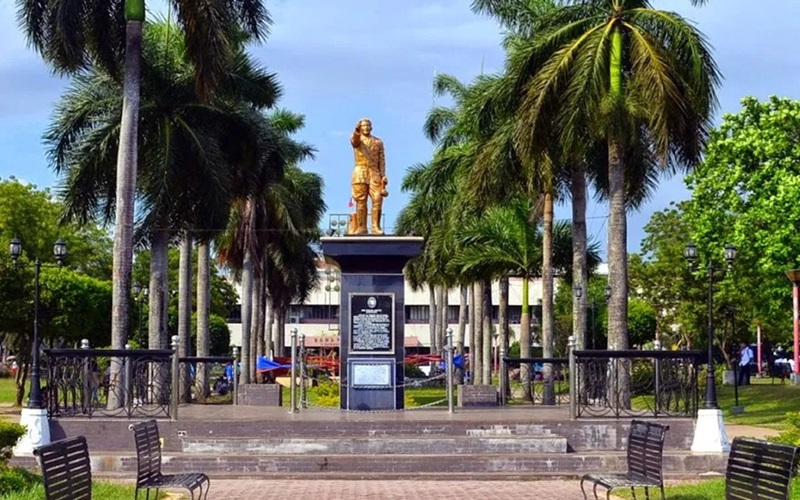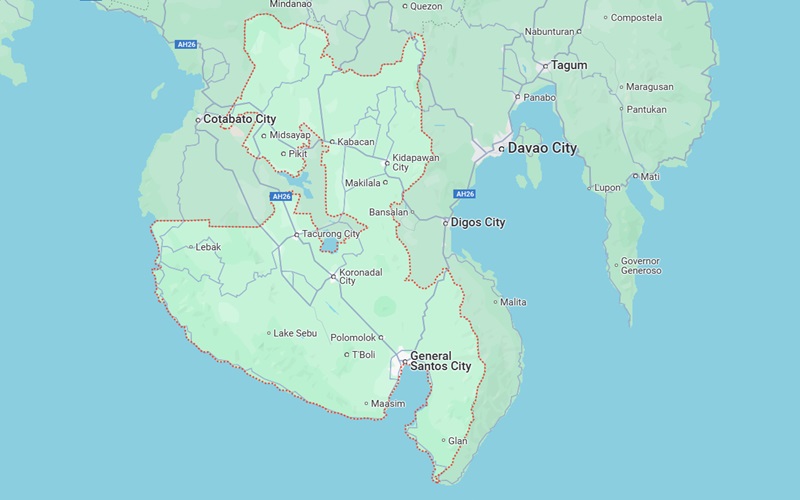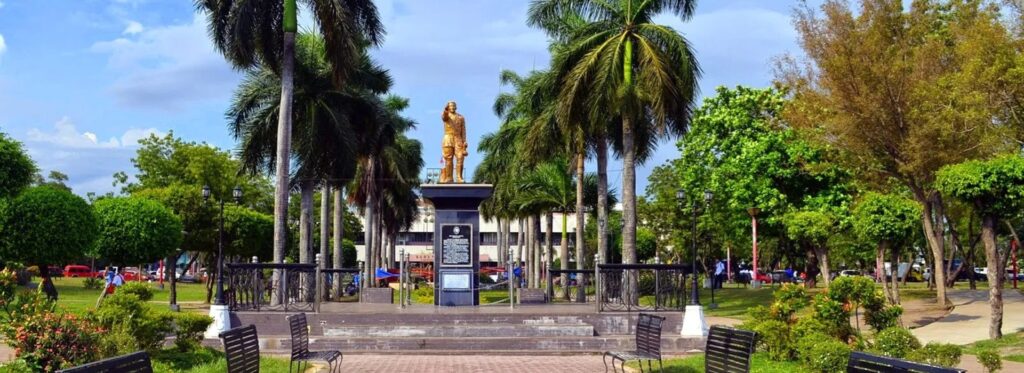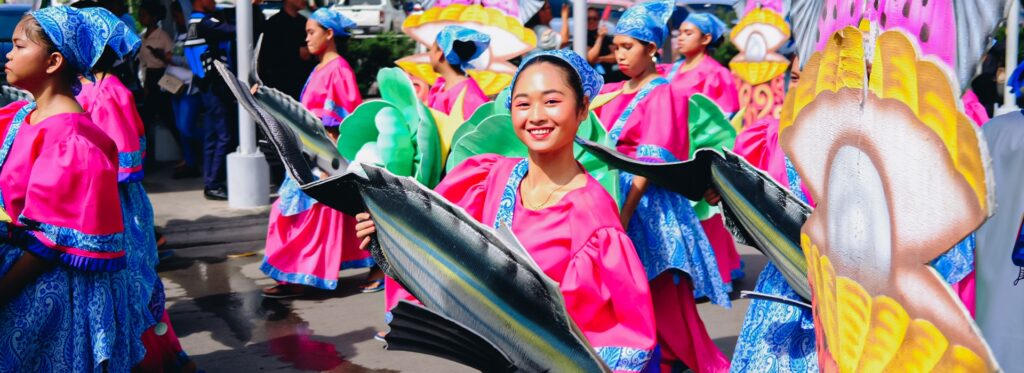Nestled in the southern part of the Philippines, General Santos City, often referred to as “GenSan,” is a vibrant destination brimming with culture, history, and natural beauty.
It offers rich cultural heritage, stunning landscapes, numerous activities, and great views, which makes it perfect for both season travelers and those visiting for the first time.
Let’s uncover some interesting General Santos facts that will improve your travel itinerary and deepen appreciation for this remarkable city.
So, pack your bags and get ready to explore the wonders of GenSan!
1. Tuna Capital of the Philippines
GenSan is called the “Tuna Capital of the Philippines” due to its thriving tuna industry. The city is home to rich fishing grounds in the nearby Sarangani Bay, making it one of the largest suppliers of fresh tuna in the country and globally.
With its bustling fishing ports and tuna processing plants, the city has earned a reputation for producing high-quality tuna, contributing significantly to both local and international markets.
2. Named After General Paulino Santos

GenSan is named after General Paulino Santos, a pioneering military leader who led a major resettlement project in Mindanao in the 1930s.
He played a key role in establishing agricultural colonies in the region, which later grew into thriving communities. In recognition of his efforts in the development of the area, the city was named in his honor.
3. Growing Population
GenSan’s population has steadily increased over the past few decades due to its growing economy, particularly in fishing, agriculture, and trade. This steady growth reflects its development as a regional hub in Mindanao.
From around 250,000 in the 1990s, the population has surged past 600,000 in recent years, driven by migration, urbanization, and economic opportunities in industries like tuna fishing and export.
4. Educational Hub
GenSan is home to several well-developed educational institutions, including universities, colleges, and technical schools.
These institutions offer a wide range of programs and are known for their quality education. The city’s emphasis on higher learning has made it a regional hub for students seeking quality education in various fields.
5. Multiple Languages
In GenSan, the official languages are Filipino and English. However, the most commonly spoken language is Cebuano (Bisaya), followed by Hiligaynon (Ilonggo).
Many locals also speak Tagalog, while English is used in business, education, and government affairs. Other regional languages and dialects may also be heard due to the diverse population.
6. Southernmost City
GenSan is considered the southernmost city in the Philippines because of its geographic location at the southern tip of the island of Mindanao.
It lies near Sarangani Bay and is one of the country’s key cities closest to the equator, making it the southernmost major urban center in the Philippines.
7. Fertile Volcanic Soil
GenSan is rich in minerals and nutrients, making it highly fertile and ideal for agriculture. The fertility of volcanic soil plays a crucial role in sustaining agricultural productivity in the region.
This soil supports the city’s farming industry, helping grow crops like pineapples, corn, and bananas, which contribute significantly to the local economy.
8. Economic Hub of Region
GenSan is considered an economic hub in southern Mindanao due to its thriving fishing, agriculture, and trade industries. It is home to the largest tuna fishing and processing industry in the Philippines.
The city’s strategic location, bustling port, and growing commercial infrastructure also attract businesses and investments, driving regional economic growth.
9. Unique Local Cuisine
GenSan is famous for its local cuisine, with a focus on freshly caught seafood like tuna, which is often grilled or prepared as kinilaw (a Filipino ceviche).
Inasal, a popular grilled chicken dish marinated in local spices, is also a favorite. The city’s cuisine reflects its coastal location and rich cultural influences, offering a delicious variety of flavors for both locals and visitors to enjoy.
10. Hometown of Manny Pacquiao
Manny Pacquiao, the world-renowned boxing champion, has strong ties to General Santos City, where he grew up and started his boxing career.
He considers it his hometown and has invested in the city’s development through businesses and philanthropy. Pacquiao’s success has brought international attention to General Santos City, further boosting its recognition.
11. Tropical Climate
GenSan has a tropical climate with generally warm and humid weather throughout the year.
It experiences relatively stable temperatures with minimal rainfall, as it lies outside the typhoon belt. The city enjoys a dry season from November to April, making it favorable for agriculture and outdoor activities year-round.
12. Annual Tuna Festival
The annual Tuna Festival in General Santos City celebrates the city’s status as the “Tuna Capital of the Philippines.” It attracts tourists and showcases the city’s rich seafood culture.
Held every first week of September, the festival features vibrant street parades, cultural shows, and cooking competitions, all highlighting the importance of the tuna fishing industry to the local economy.
13. Rich Cultural Heritage
GenSan boasts a rich cultural heritage, shaped by the diverse ethnic groups, including the Blaan, Maguindanaon, and other indigenous communities.
The city celebrates this diversity through vibrant festivals, traditional dances, music, and crafts that reflect its unique blend of indigenous and modern influences.
14. Kalilangan Festival
The Kalilangan Festival is a cultural celebration held every February, showcasing the harmonious coexistence of different ethnic groups in the region.
The festival includes vibrant street parades, traditional dances, and cultural presentations that highlight the city’s diverse heritage and unity. It commemorates the city’s founding and promotes social interaction and understanding among its people.
15. Part of SOCCSKSARGEN Region

SOCCSKSARGEN is a region in the southern Philippines, consisting of South Cotabato, Cotabato, Sultan Kudarat, Sarangani, and General Santos City.
GenSan plays a vital role in the area’s trade, commerce, and tuna industry. Its strategic location along Sarangani Bay makes it a key city in the region’s development and growth.
16. Several Public Transport Options
Easy-to-use public transport in General Santos City is primarily served by tricycles, jeepneys, and buses.
Tricycles are the most common mode for short trips within the city, while jeepneys cover longer routes, connecting neighborhoods and nearby towns. Buses provide transportation to destinations outside the city, including nearby provinces and other regions.
17. Several Hiking Spots
Hiking in General Santos City offers scenic trails with views of mountains and lush landscapes. The trails vary in difficulty, catering to both casual hikers and experienced adventurers.
Popular spots include Mount Matutum and nearby natural parks, which provide opportunities for outdoor enthusiasts to explore diverse flora and fauna.
18. Formerly Know as Dadiangas
Dadiangas is a former name of General Santos City, derived from a thorny plant called “Dadiangas,” which was common in the area.
The city’s main district is still called Dadiangas, reflecting its historical roots.
19. Strategic Location
The port complex in General Santos City, known as the Makar Wharf, is a key gateway for trade and commerce in the region.
It serves as a major hub for tuna exports, shipping goods both domestically and internationally. The port’s strategic location boosts the city’s status as a significant economic and maritime center in the Philippines.
20. Mix of Religions
GenSan is home to a diverse mix of religions, reflecting its multicultural population. This religious diversity contributes to the city’s inclusive and harmonious atmosphere, where various faiths coexist peacefully.
The predominant religion is Roman Catholicism, but there are also significant communities of Muslims, Protestants, and other Christian denominations.
21. Environmental Preservation Commitment
GenSan is committed to environmental preservation through various initiatives aimed at sustainable development. The city promotes proper waste management, reforestation, and conservation programs to protect its natural resources.
Efforts to preserve its coastal areas, particularly its rich marine life, are essential for maintaining its status as the Tuna Capital of the Philippines.
22. Diverse Wildlife
GenSan boasts diverse wildlife due to its rich natural environment, including coastal areas, forests, and mountains. This biodiversity enhances the ecological balance and offers opportunities for eco-tourism and wildlife conservation.
The nearby Sarangani Bay is home to marine species such as tuna, dolphins, and sea turtles, while the city’s lush landscapes support a variety of bird species and other wildlife.
23. Numerous Historical Landmarks
GenSan is home to numerous historical landmarks that reflect its rich past and cultural heritage.
Notable sites include the General Paulino Santos Museum, which honors the city’s founder, and Plaza Heneral Santos, a popular gathering place and tribute to the city’s history.
Other landmarks include historical churches and monuments that celebrate the city’s growth and the contributions of its diverse communities.
24. Well Developed Health Services
GenSan has well-developed health services, with multiple hospitals and medical facilities providing quality care. These facilities contribute to the city’s status as a regional medical hub in SOCCSKSARGEN.
Key institutions like General Santos City Hospital and St. Elizabeth Hospital serve the city’s growing population, offering a range of services from general medicine to specialized care.
25. Vibrant Street Food Scene
GenSan is known for its vibrant street food scene, with popular dishes like Pastil, a flavorful rice meal topped with shredded chicken or beef wrapped in banana leaves.
Other street food favorites include grilled skewers, kwek-kwek (battered quail eggs), and balut (fertilized duck egg). These local delicacies reflect the city’s rich culinary culture and are enjoyed by locals and tourists alike.
26. Digital Nomad Friendly
GenSan is considered digital nomad friendly due to its affordable cost of living and reliable internet connectivity. The city offers a range of accommodations and coworking spaces that cater to remote workers.
Also, the local culture and proximity to natural attractions provide a balanced lifestyle for digital nomads. The friendly locals and the city’s reputation add to its unique charm.
27. Known for Durian Production
General Santos City is known for its significant durian production, a popular tropical fruit in the region. The city’s favorable climate and rich volcanic soil provide ideal conditions for durian farming.
Locally grown durians are prized for their rich flavor, contributing to the city’s agricultural diversity and economy.
28. It is Safe to Visit
While GenSan is considered generally safe, it’s advisable to stay informed of local news, especially regarding security in certain areas of Mindanao.
The city has a stable local government, and the current mayor is focused on development and maintaining peace in the area.
Final Word
We hope these amazing General Santos facts have inspired you to add it to your travel bucket list.
As you can see, GenSan is more than just a gateway to the southern Philippines—it’s a treasure trove of experiences waiting to be discovered. The city has something special for everyone.
Start planning your trip today and uncover the hidden gems of GenSan for yourself. Don’t forget to share your experiences and favorite discoveries with us in the comments below!

